Venice
Back to Italy 2016 Index
On the Canals
Palazzo Ducale - Palace Art
Venice's history began around 400 A.D., when settlers fleeing the barbarian invasions
sought refuge on the low lying islands off the mainland in the hopes they were of no
interest to the invading armies. The name is derived from the ancient Veneti people who
inhabited the region by the 10th century BC. Venice has been known as the "La Dominante,"
"Serenissima," "Queen of the Adriatic," "City of Water," "City of Masks," "City of Bridges,"
"The Floating City," and "City of Canals." All of these are fitting names for this most beautiful
of Italian cities. By the close of theMiddle Ages, Venice was a maritime and commercial powerhouse which
controled the Adriatic Sea as far as Greece and Turkey. The City State of Venice is considered to have been
the first real international financial center which gradually emerged from the 9th century to its peak in the
14th century. It is also known for its several important artistic movements, especially the Renaissance period.
After the Napoleonic Wars and the Congress of Vienna, the Republic was annexed by the Austrian Empire, until it
became part of the Kingdom of Italy in 1866, following a referendum held as a result of the Third Italian War of
Independence. Venice has played an important role in the history of symphonic and operatic music, and it is the
birthplace of Antonio Vivaldi. (information from Wikipedia)
 |
| View toward the mainland flying into Venice airport. |
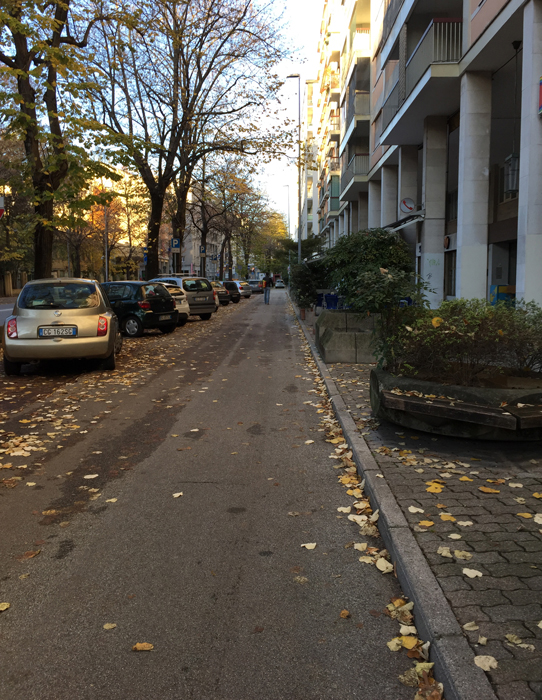 |
| Our
hotel is on this street in Mestre, one of six residential areas on the mainland. In
2014, 264,579 people resided in Comune di Venezia, of whom only around
55,000 live in the historic city of Venice. |
We spent the first evening looking at shop windows in Mestre before
returning to our hotel for dinner.
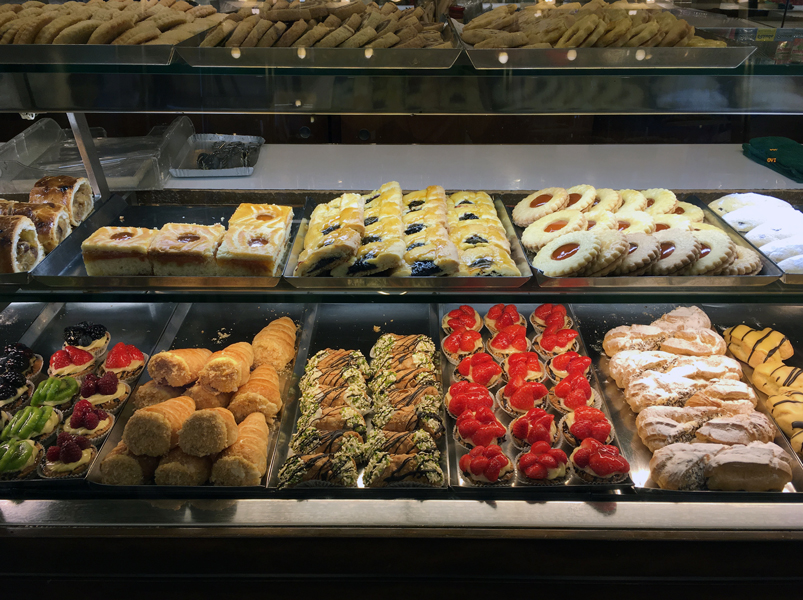 |
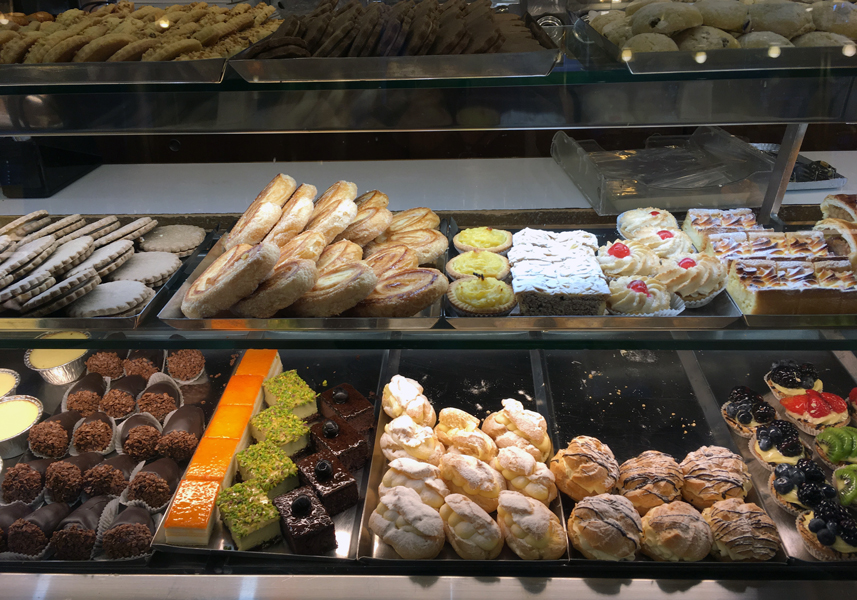 |
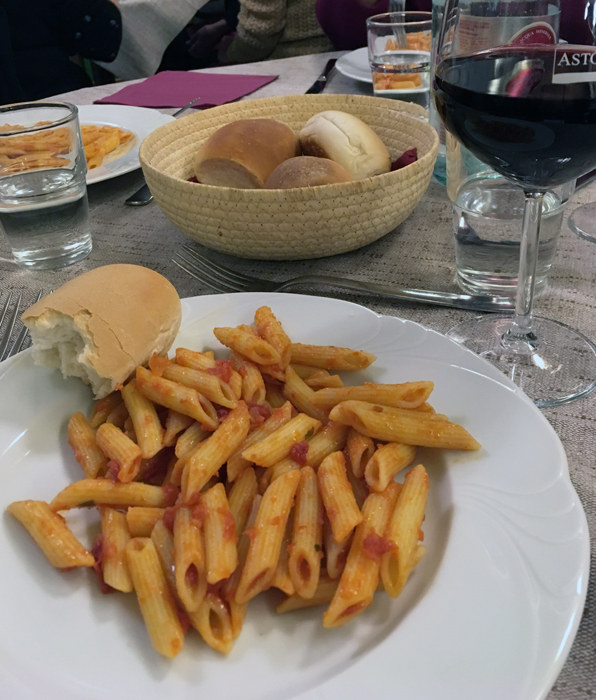 |
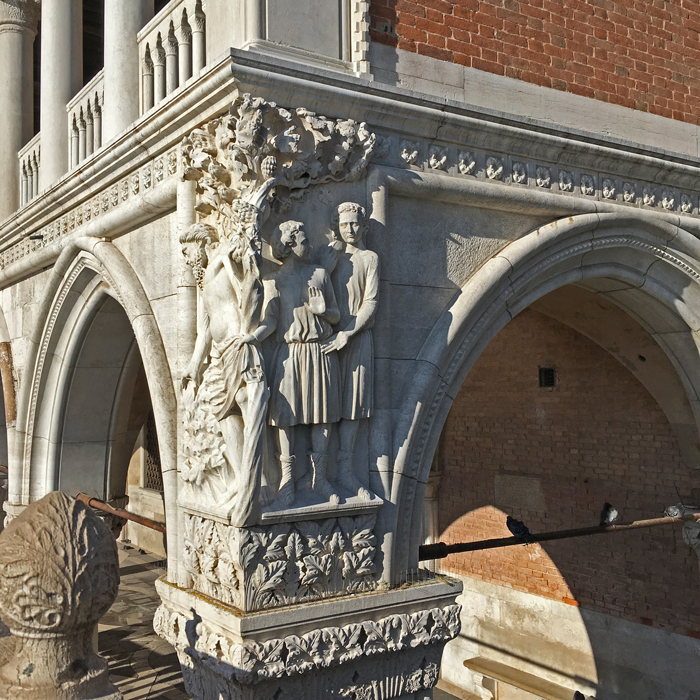 |
| Building detail near our hotel. |
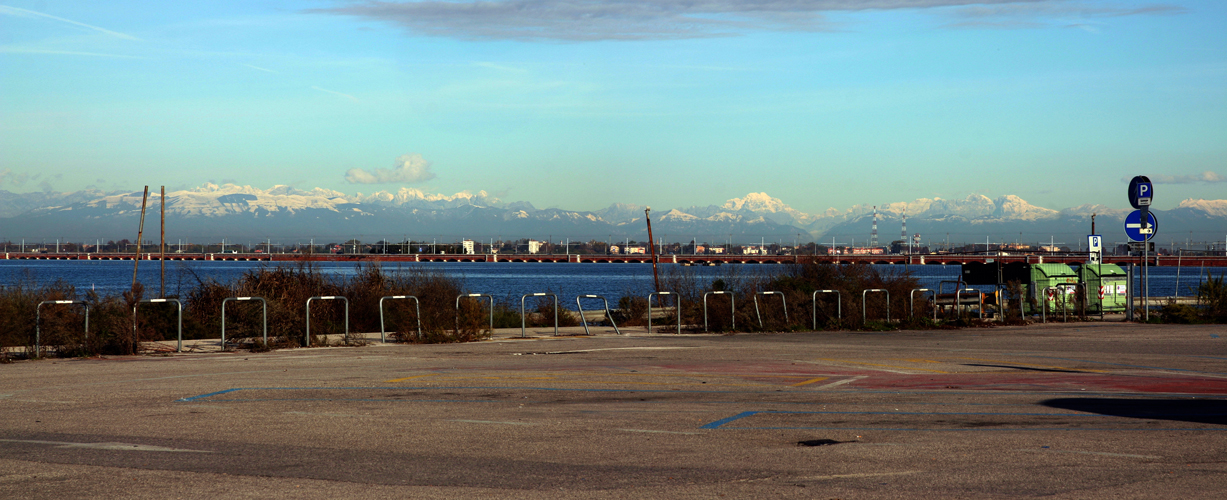 |
| From
Mestre, we board a bus to Venice. The causeway seen on the far side of
the water was built by Mussolini to link Venice to the mainland. Snowcapped mountains in the background. |
The Venetian Waterfront
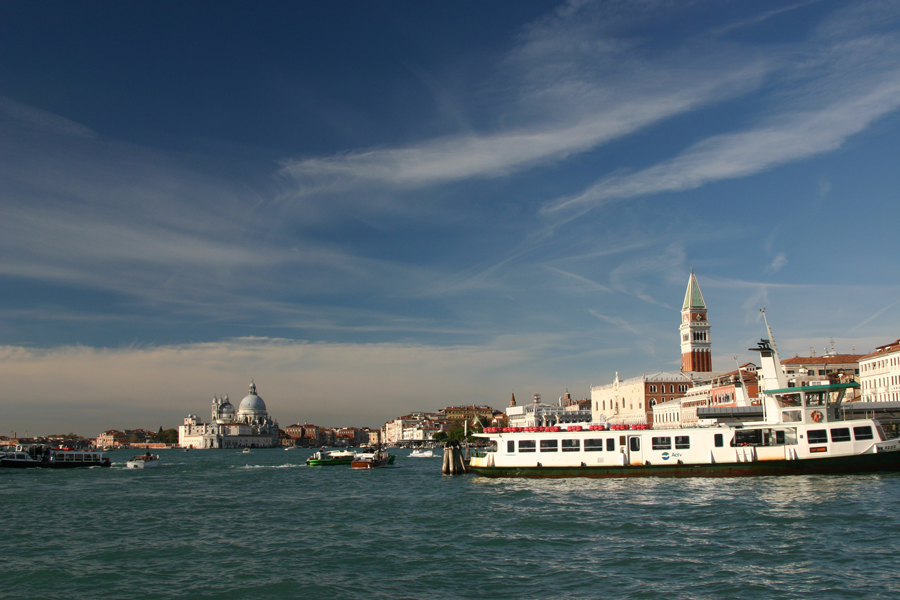 |
| The bus drops us at a transit center where we catch a short boat ride across Bacino San Marco to the main entrance to the city. |
 |
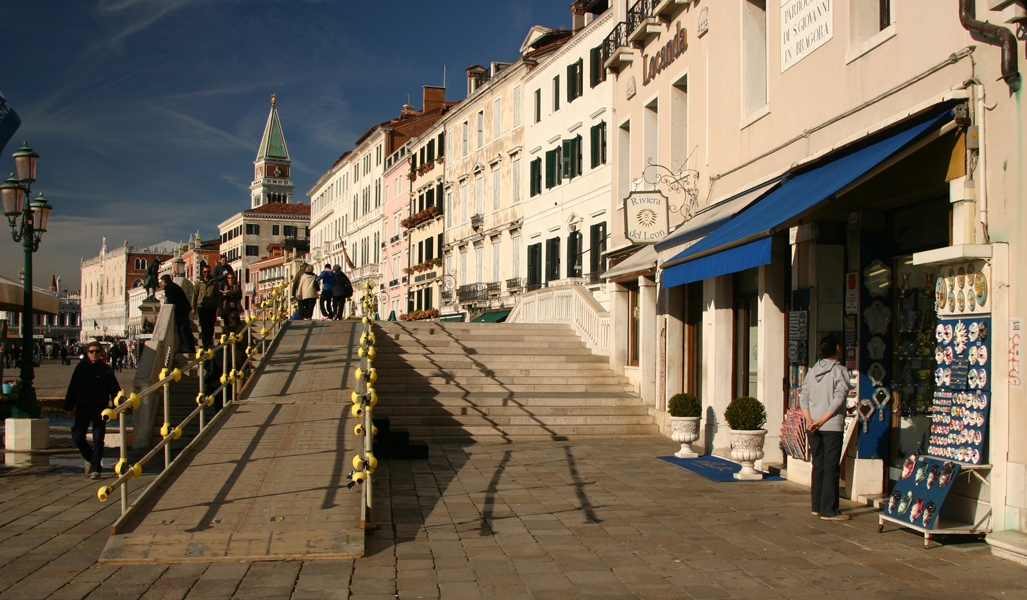 |
| Crossing the Ponte Del Vin from the boat landing heading towards the Piazza San Marco. |
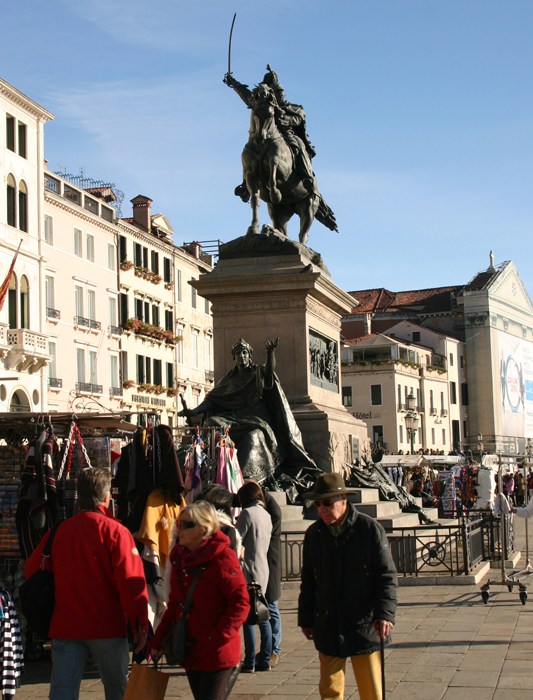 |
| Statue commemorating Vitorio Emanuele II, the man who is credited with unifying Italy in 1866. |
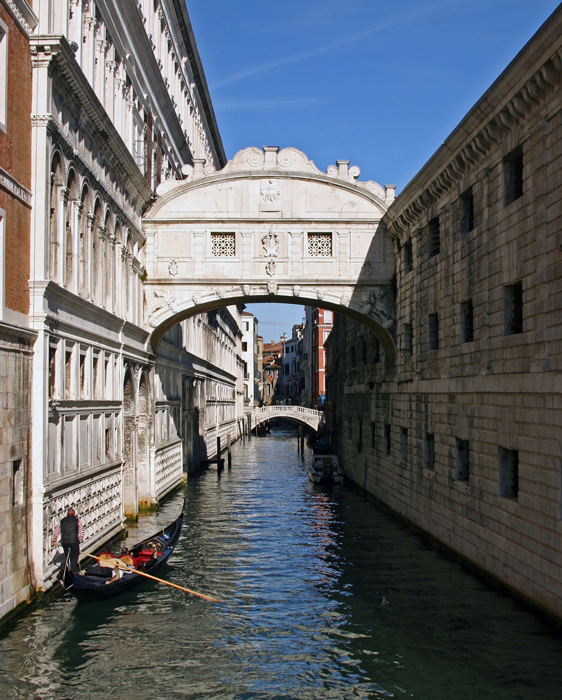 |
| Crossing the Ponte Della Paglia. The Ponte Di Sospiri (Bridge of Sighs) connecting the Doge's Palace to the Prigioni Nuove (New Prison), and crossing the Rio di Palazzo, is visible. |
 |
| View of the waterfront from the Ponte Della Paglia. |
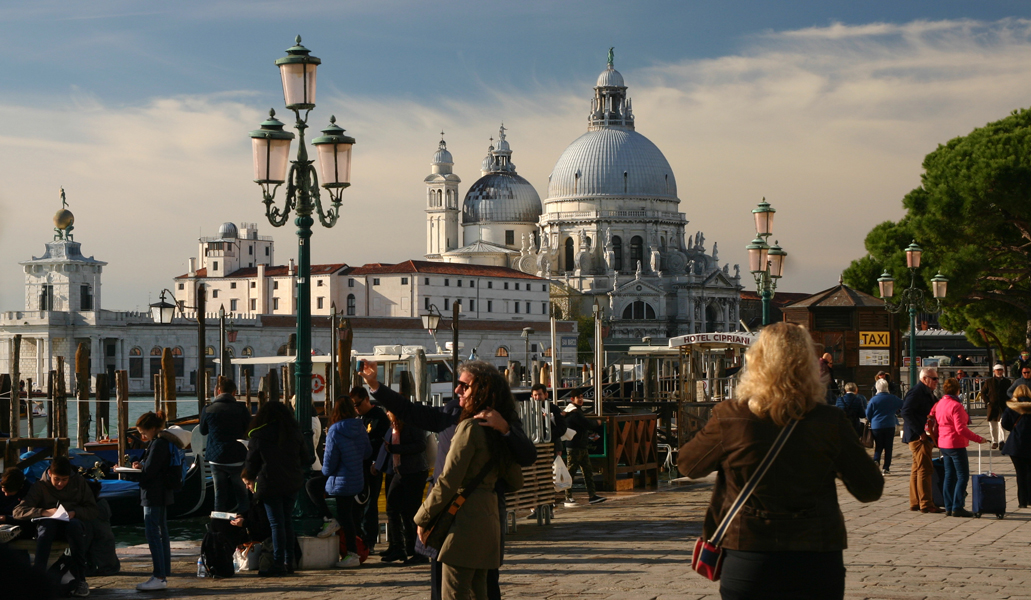 |
| Santa Maria Della Salute seen from the entrance to the Piazzetta San Marco. |
Piazzetta San Marco
 |
| Approaching
the Piazzetta San Marco, the entrance to the Piazza San Marco, the
Cathedral, and the Doge's Palace. The statues atop the columns are the
winged lion representing Saint Mark, and Saint Theodore. |
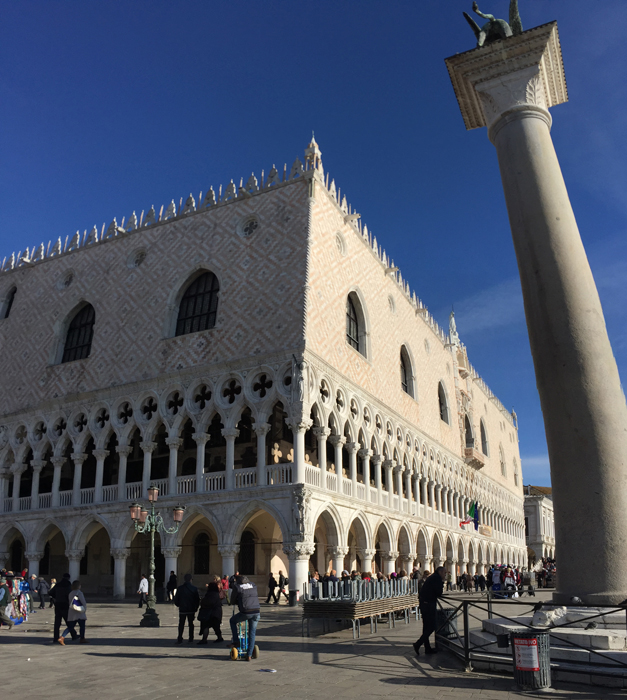 | 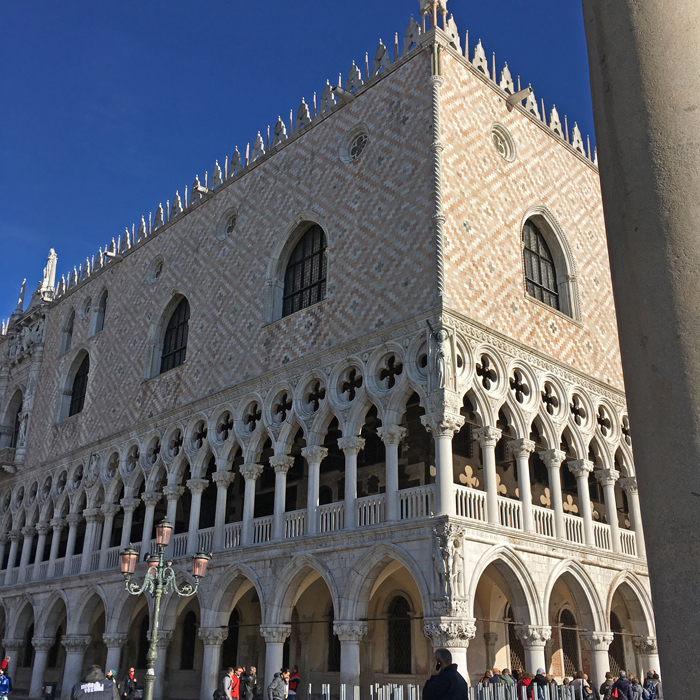 |
| Corner of the Palazzo Ducale (Doge's Palace), | seen from beneath the Column of San Marco, distorted by the wide angle view. |
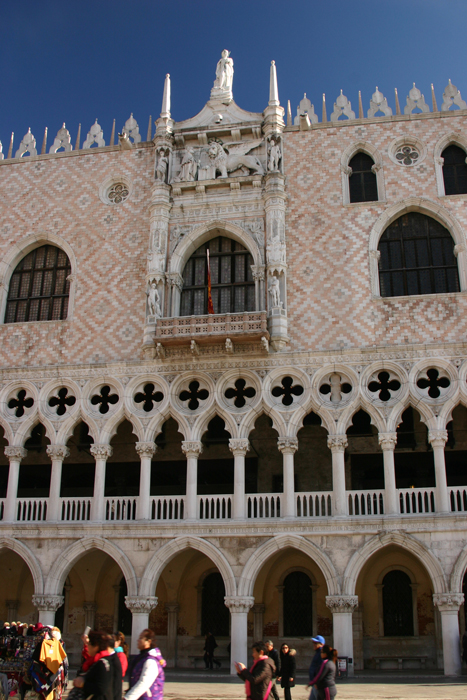 |
| Palazzo Ducale. |
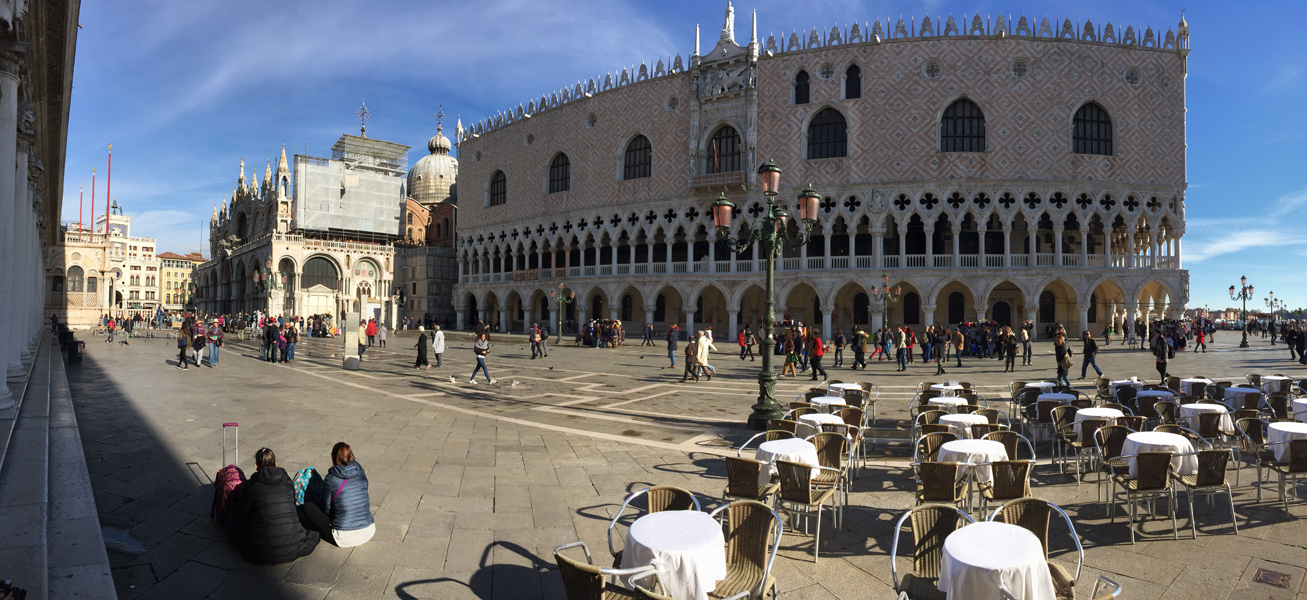 |
| Wide view of the Piazzetta San Marco. |
Piazza San Marco, Basilica San Marco, Courtyard of Palazzo Ducale
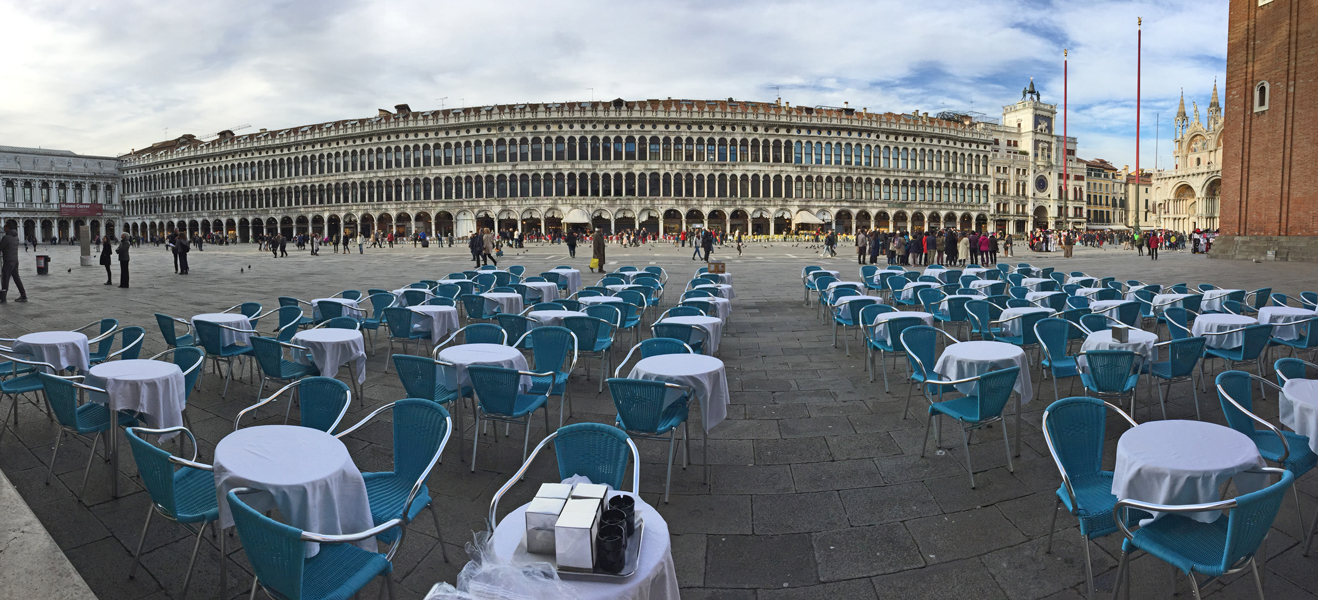 |
| After
walking the length of Piazzetta San Marco, you arrive into the main
Piazza San Marco. This wide view is from the left of the bell
tower looking at the Procuratie Vecchie, the old administration building, with Museo Correr to the left, and the facade of the Basilica San Marco to the right. The entrance to Piazza San Marco is on the other side of the bell tower. |
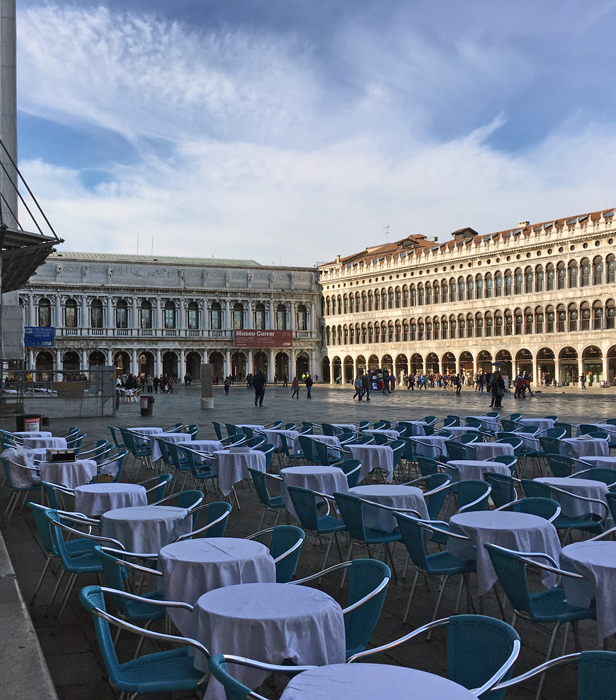 |
| Museo Correr and the Procuratie Vecchie (old administration building). |
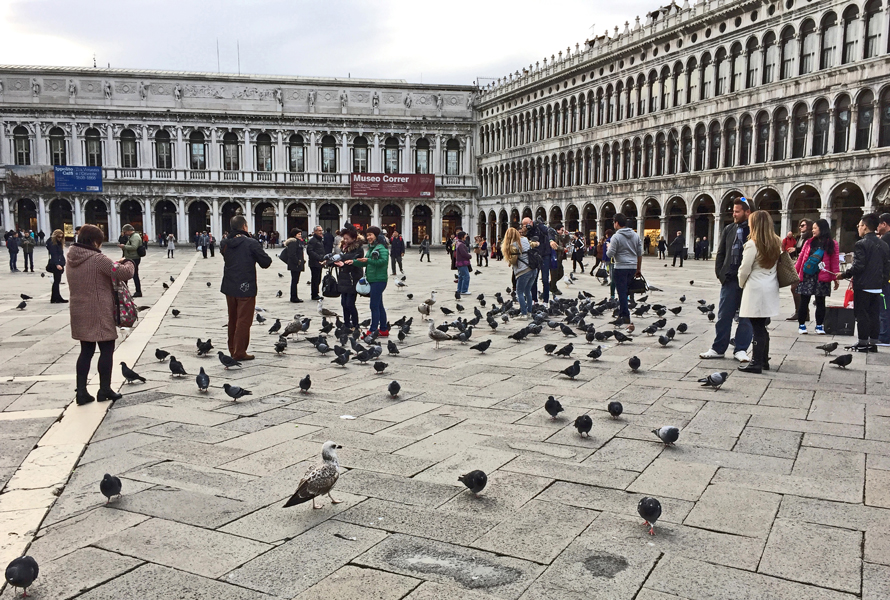 |
| Tourists like to feed the pigeons in the square; the birds land on their outstretched arms to pick snacks from their hands. |
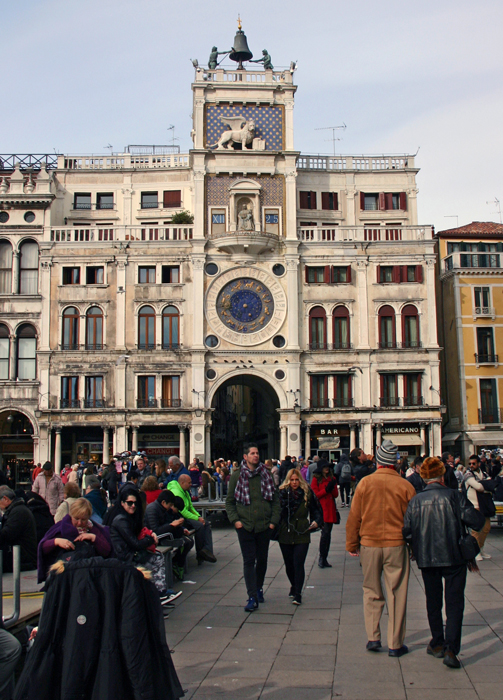 |
| The
famous 15th century clock tower. The figures above the winged lion
strike the hours, while the 24-hour clock face shows the hours and
signs of the zodiac.
The blue panels show the hours and minutes. The lower arch leads to the
Merceria, the main street of the city, linking the Piazza and the Rialto. |
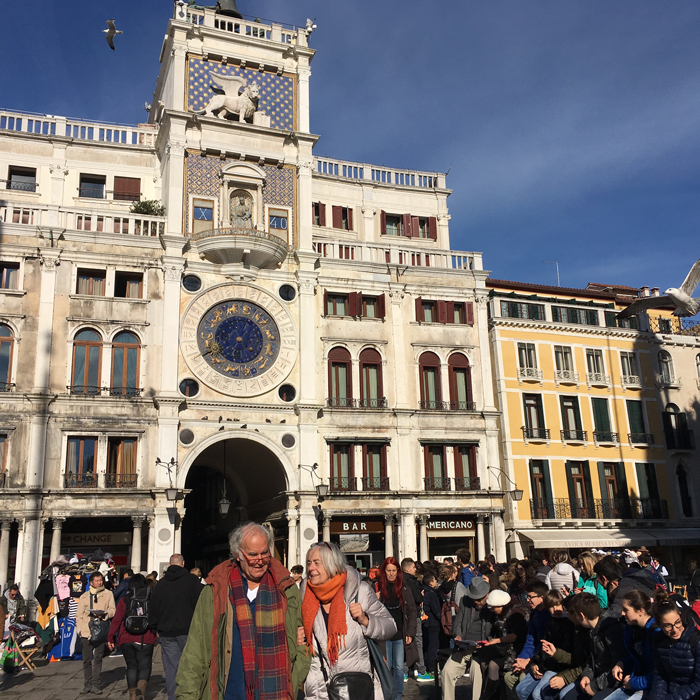 |
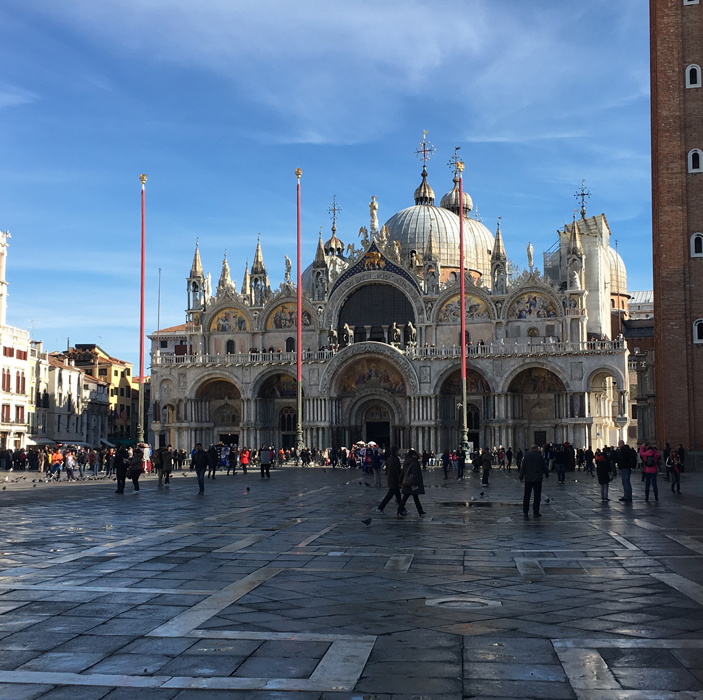 |
| Stepping
out into the Piazza, looking at the front of San Marco, started in 828,
finished about 1093. A splendid example of Italo-Byzantine
architecture, noted for the gold ground mosaics adorning the building
and its interior. The bell tower is on the right. |
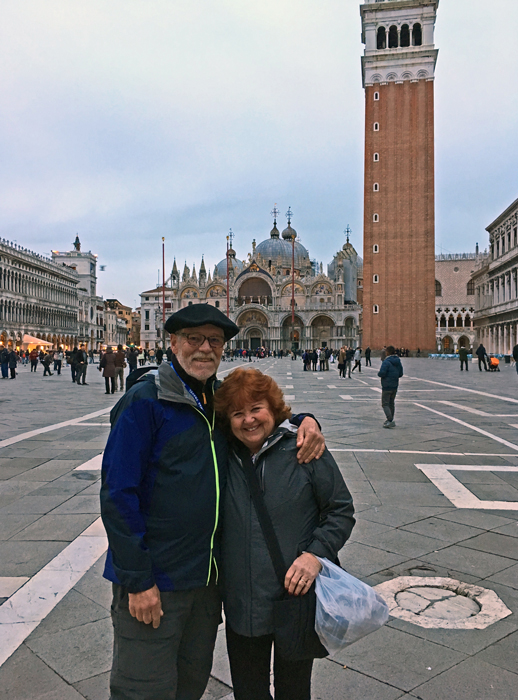 |
| Standing in Piazza San Marco. |
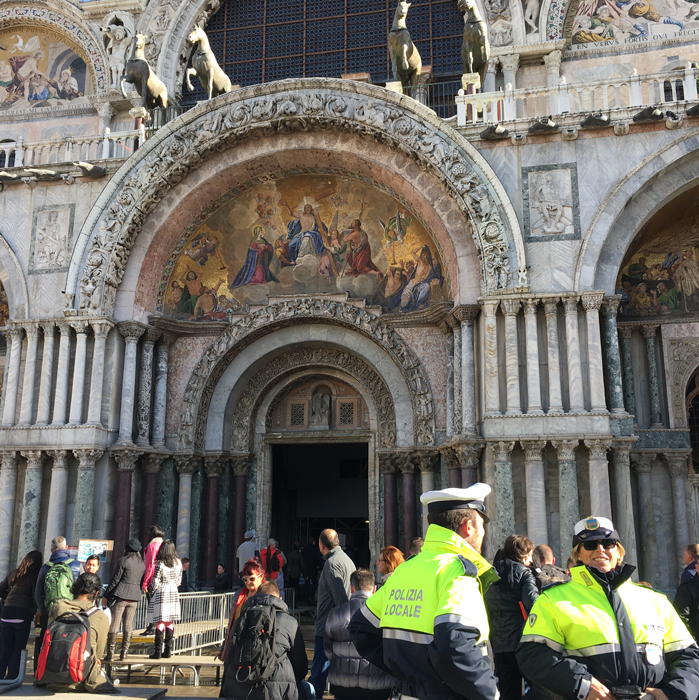 |
| Portal of the Basilica San Marco. |
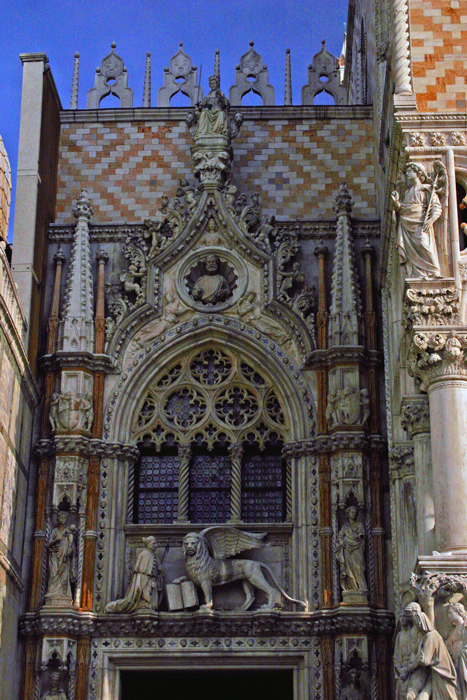 |
| Exterior facade of Palazzo Ducale entrance with Doge Francesco Foscari kneeling before St. Mark's Lion. |
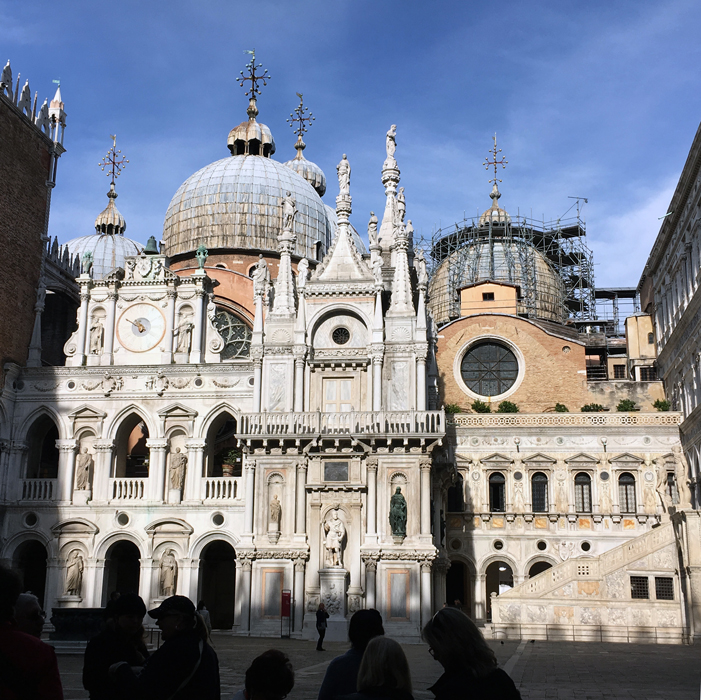 |
| Side of the basilica, taken in the courtyard of the Palazzo Ducale. The Giant's Staircase -
named for the huge statues of Mars and Neptune representing
Venice's domination over land and sea - at the top, is visible on the right. |
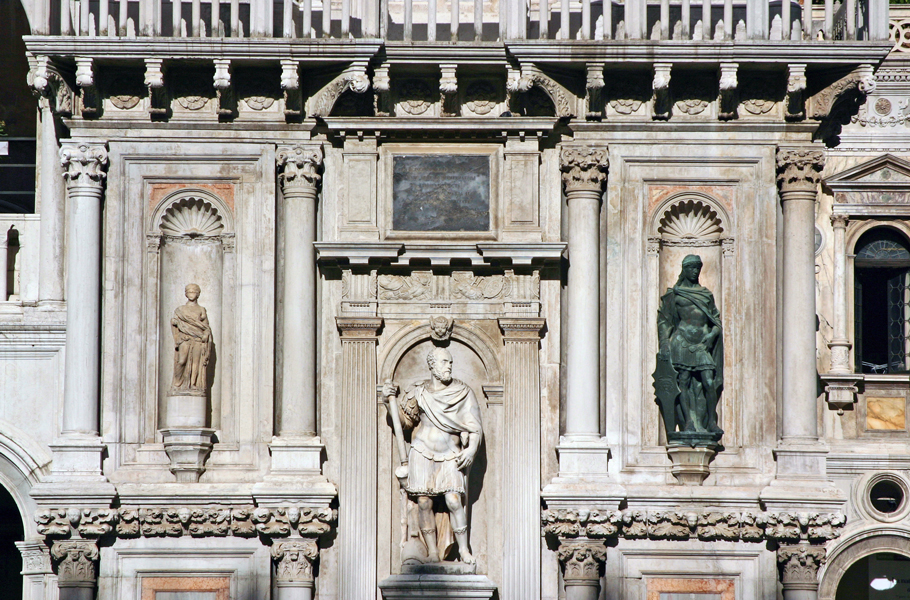 |
was
the secret state court, in charge of the secret police and with control
over every aspect of public and private life. There was no appeal
against their judgment.was the secret state court, in charge of the
secret police and with control over every aspect of public and private
life. There was no appeal against their judgment.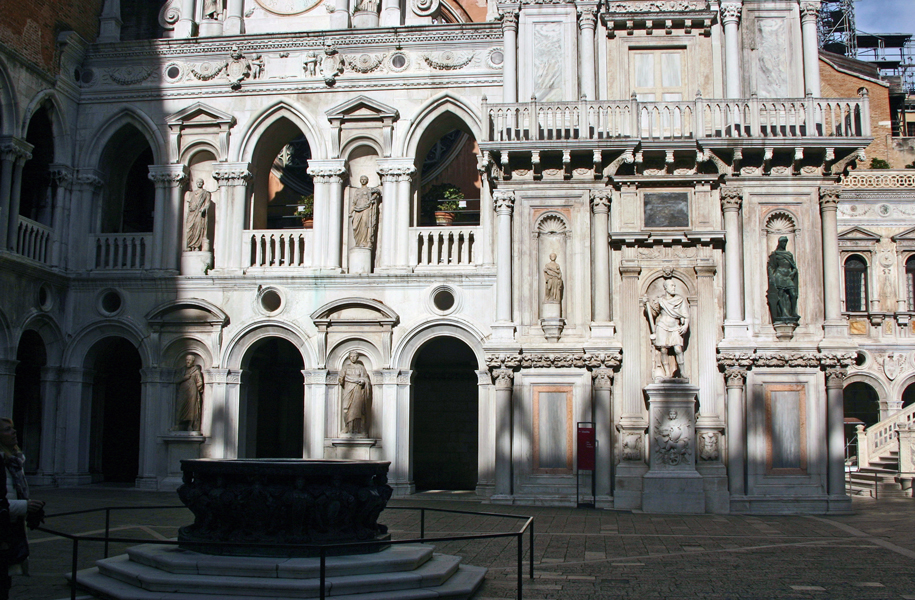 |
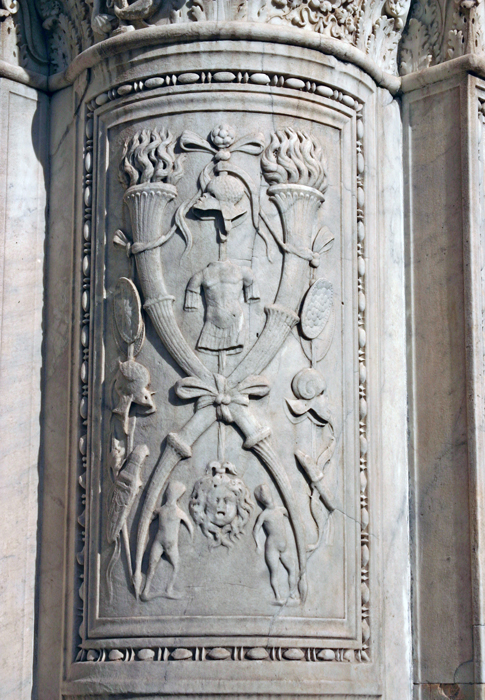 | 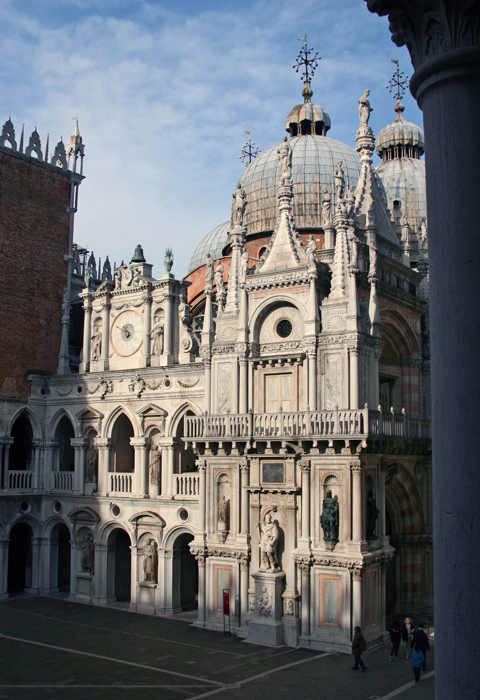 |
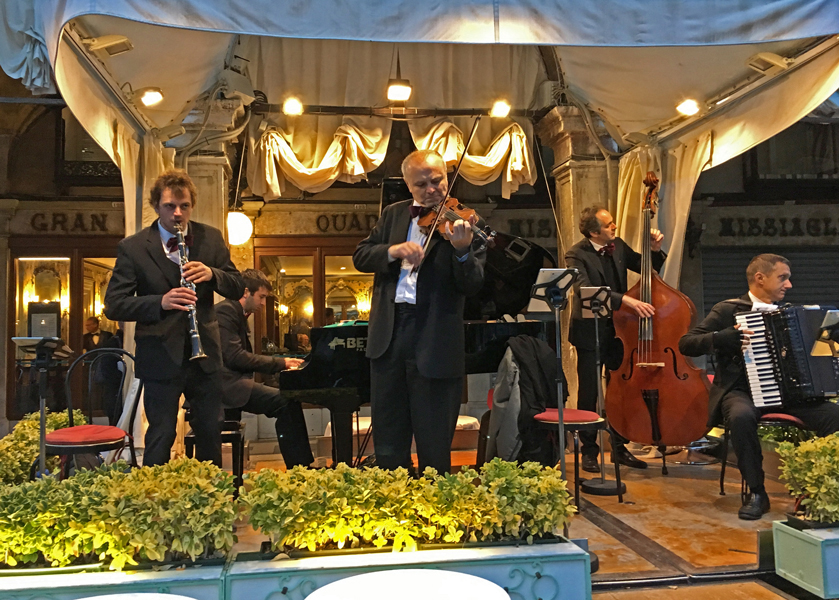 |
| Back in the Piazza San Marco - nightime concert. |
Some nightime window shopping, then to dinner.
 |
| Definitely the home of pasta! |
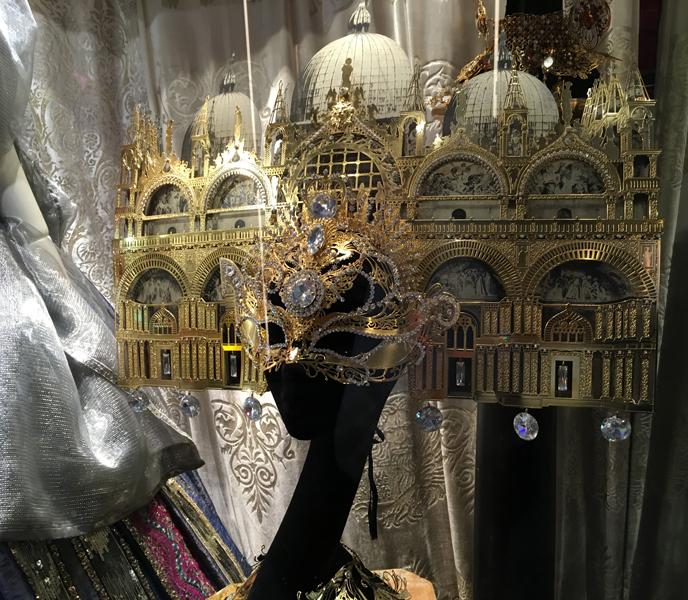 |
| "City of Masks"? Indeed. |
 |
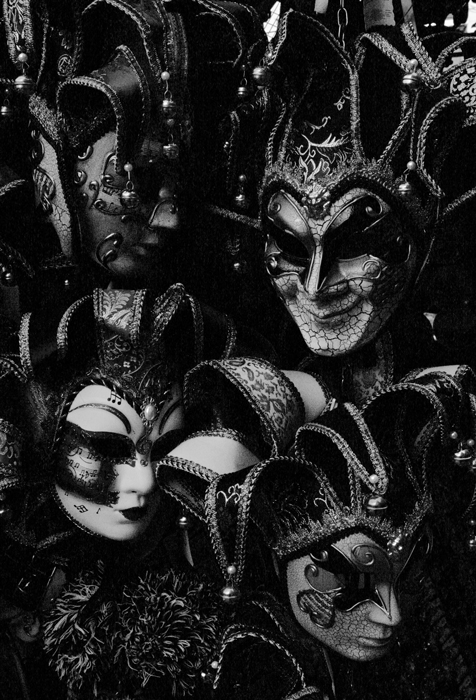 |
| Souvenier stand near Ponte Vecchio. |
Window shopping Murano glass
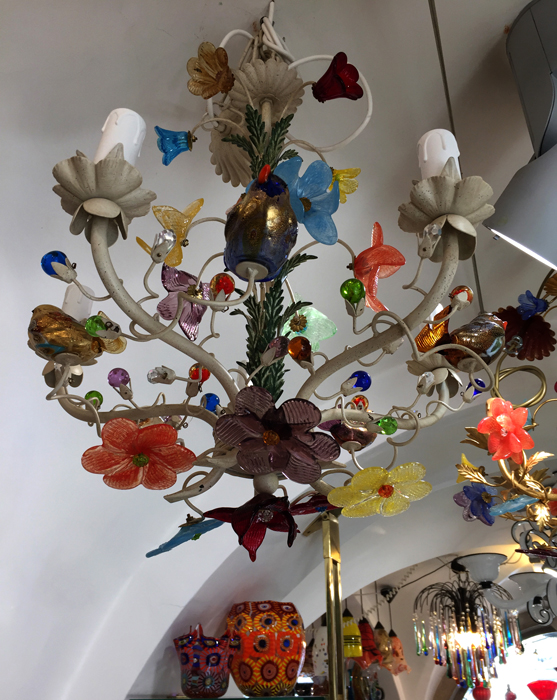 |
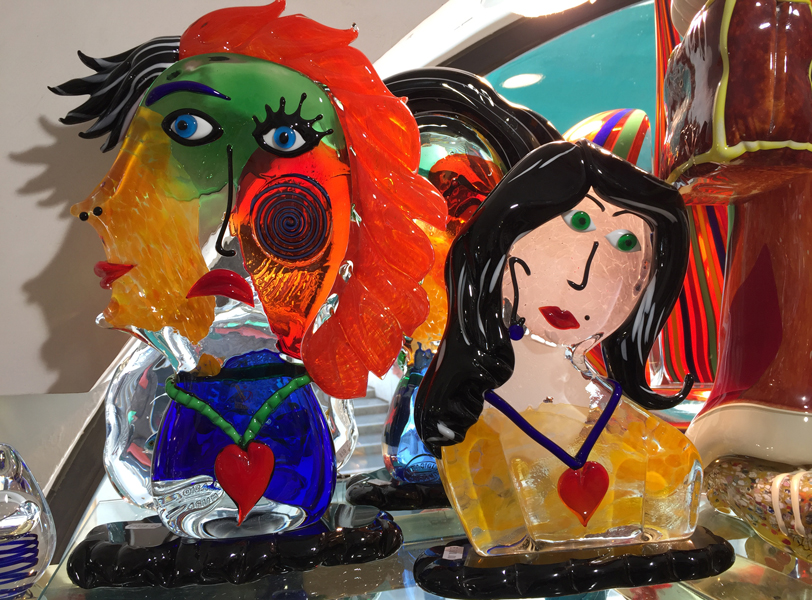 |
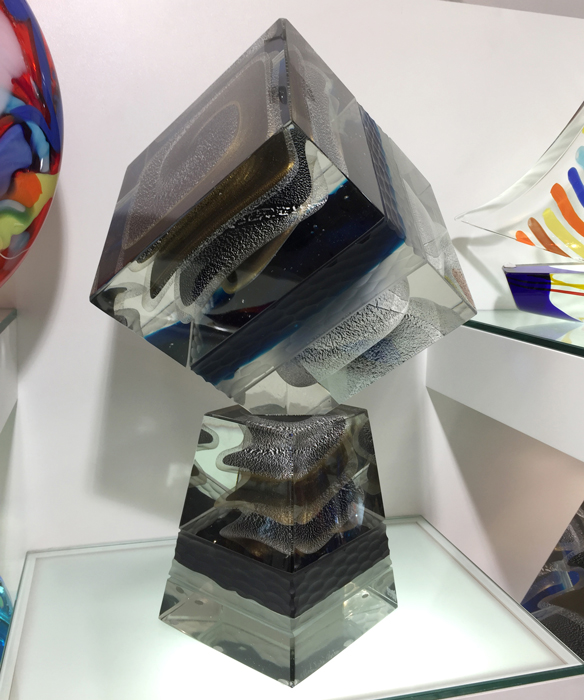 | 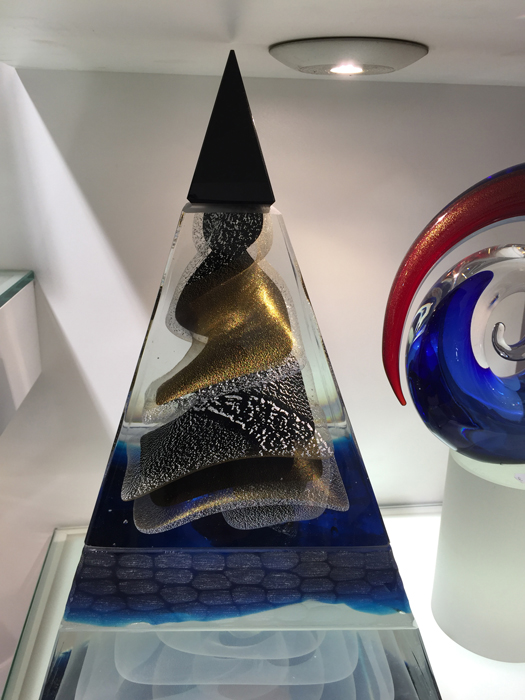 |
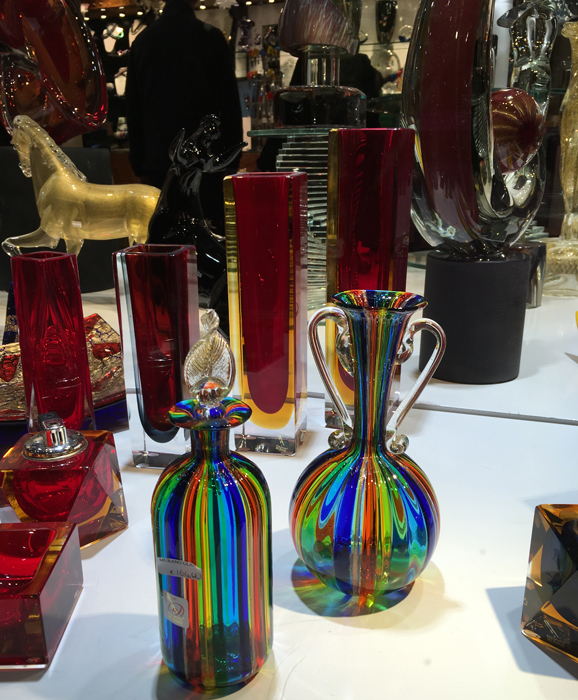 |
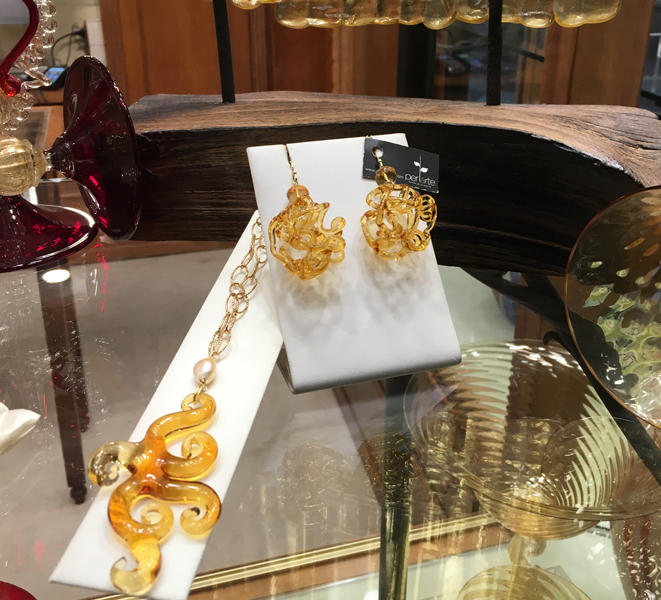 |
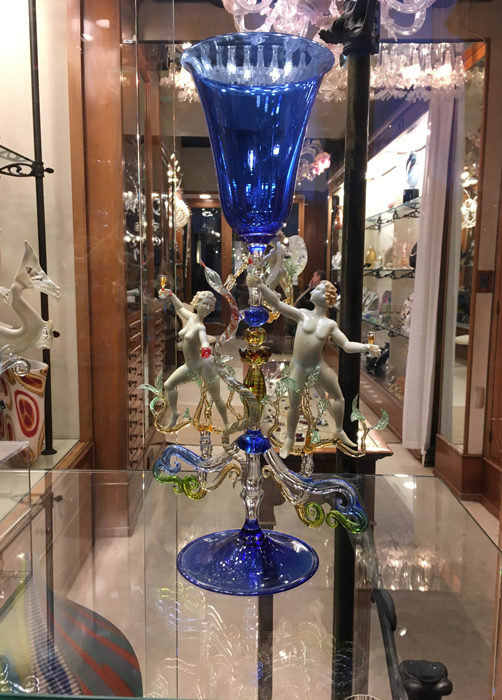 |
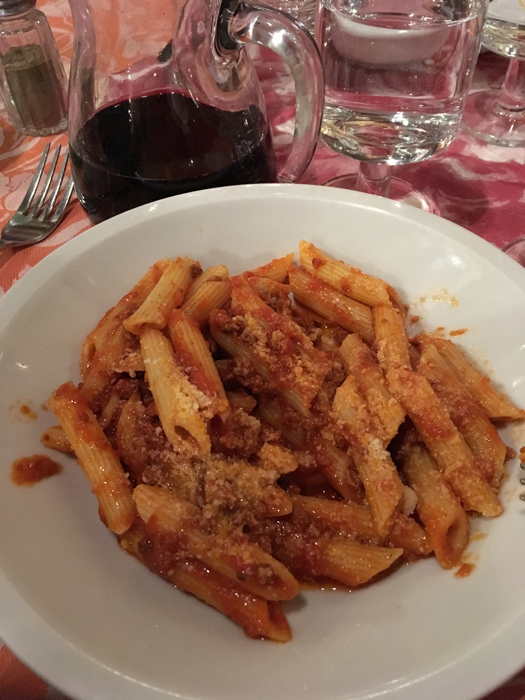 |
| Great
finish to a nice day. Something about Italian pasta sets it apart from
any pasta we've ever tried at home! I cleaned my plate every time! |
Back to Italy 2016 Index
On the Canals
Palazzo Ducale - Palace Art